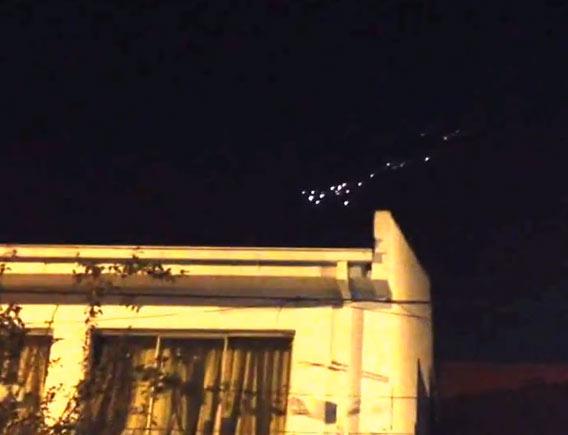On Thursday night, reports of a stream of UFOs over Chile and Argentina started making the rounds. It was caught on video, and it’s pretty amazing!
It’s with some relief I can say that’s not a fleet of alien spaceships bent on either enslaving the human race or possibly eating us. It’s not even a swarm of meteors: what you’re actually seeing there is a satellite dramatically breaking up as it re-enters the Earth’s atmosphere. And it’s even been identified: it was the Cygnus mass simulator, a payload lofted into space by the Antares rocket in April!
That was the first successful launch of the rocket by the Orbital Sciences Corporation, placing several small satellites into orbit. Eventually, the rocket will also be equipped with a cargo delivery spacecraft called Cygnus, planned to take supplies to the space station. For the first test flight on Apr. 17, Antares carried a dummy payload with the same mass as a Cygnus to test out the rocket systems.
Antares put the Cygnus dummy into a low orbit. At that altitude the atmosphere is thin, but it’s there. Over time, drag affected the satellite, lowering its orbit, dropping it into thicker air, slowing and dropping it more. On Thursday night local time (Friday morning, May 10 at about 01:00 UTC), the Cygnus dummy payload dropped down enough to experience re-entry. As it slammed through the atmosphere at several thousand kilometers per hour it compressed the air in front of it, heating it up. The pressure and heat disintegrated the structure, and it fell apart, blazing across the sky.
The timing, direction, and speed are all consistent with it being the Antares payload, so it looks like we can move this event from the “UFO” into the “IFO” category.
I’ve seen hundreds of meteors, so I’m pretty familiar with what they look like. I’ve only witnessed a couple of satellite re-entries, and there’s no mistaking the two! Meteors are moving at interplanetary speeds, and zip across the sky. Satellites are more stately, moving at a fraction of a meteor’s speed, and you commonly can see the little bits and pieces burning and falling away as they go by. It’s astonishing.
As more private companies get into the launch game—and with everyone walking around with a private movie studio packed into their phones—we’ll be seeing more video like this. I hope that as these sightings and videos become more common, people will learn even more about what’s going on literally right over their heads.
Tip o’ the probe to my friend and space historian James Oberg for alerting me to this, and to the folks (including Ted Molczan) at the SatObs SeeSat forum for the quick work identifying the debris.
